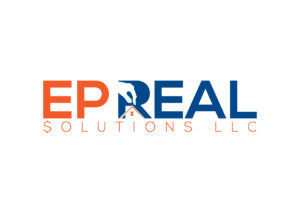
Call Us Now
The prospect of losing your home can be very stressful and overwhelming. In here we will tell you some steps you can take to prevent foreclosure in El Paso, the foreclosure procedure, and also how we can help you stop it.

In simple words, foreclosure in when a homeowner fails to pay off their mortgage and as a result, they lose their home.
Many people across the country struggle to pay off their mortgage due to different reasons such as:
To prevent foreclosure in El Paso we have to look at Texas law, but first let’s see what foreclosure entails.
Zillow explains that there are two types of foreclosure:
Judicial Foreclosure:
Non-Judicial Foreclosure:
In Texas, most foreclosure processes are non-judicial as long as the deed of trust has a “power of sale clause”. This clause allows non-judicial foreclosure. [1] [3]
Contact your loan servicer as soon as possible.
The Federal Deposit Insurance Corporation recommends contacting your servicer ASAP because they can discuss options with you (more on that later).
Your loan servicer is in charge of collecting all the money that goes towards paying your mortgage. They need to be involved and completely informed if you are struggling to make payments.
If you’re worried about foreclosure, then it is safe to assume you might’ve already missed a few payments on your mortgage. At which point, you have been contacted by your loan servicer. Do not ignore their letters or phone calls. At this point you should discuss options with them. [1]
Make sure they explain to you all the options available and use the internet to do your own research on these options.
Furthermore, when trying to prevent foreclosure in El Paso (or any city for that matter), it is important to not fall into scams.
We can all recognize offers that are too good to be true. Offers such as repairing your credit instantly or even those advising you to stop making payments are HUGE red flags. Do not fall for these scams.
As stated above, your loan servicer can provide you with some help in order to avoid foreclosure.
Known as ‘loss mitigation’, these options are intended to help you keep your home and prevent a significant financial loss to the mortgage lender. [4]
As a note, keep in mind the use of the term ‘hardship’, as you will come across this term when you file for pre-foreclosure help.
According to the Consumer Financial Protection Bureau, ‘hardship’ refers to any circumstance that hinders your ability to pay your mortgage. Examples provided are job loss, medical expenses, divorce, death, among others. [4]
With this in mind, make sure your situation falls within the definition of ‘hardship’ and also be sure you can provide evidence for it.
Now let’s look at the options you have at hand:
The lender can modify your loan by lowering your interest rate, extending the length of the loan’s term, or changing the interest rate from variable to fixed. [5]
This permanently changes the structure of the loan and as such you will have to provide evidence of hardship. This will most likely be in the form of financial documents (bank statements, pay statements etc.). Your lender or servicer should let you know what documentation you will need in order to conduct a loan modification.
As explained by Nerd Wallet, you could see a couple of potential downsides from a loan modification, either an increased term for the mortgage and/or a negative blow to your credit score. [5]
A longer term means you will now take longer to pay off the mortgage. For example, if your term was initially 15 years it can now be 20 or more years. Additionally, a negative mark on your credit score may affect your ability to get approval for loans in the future.
The lender allows you to get caught up on your missed payments over a definite amount of time.
This involves paying your regular monthly payment plus whatever amount you and the lender agree on. For this specific amount of time, your mortgage payment will be higher than what you used to pay, but at the end of this period you will be caught up with your mortgage payments.
The obvious downside with this option is that you will have to spend more money every month in order to meet your mortgage obligations.
With this option, you can reduce or suspend your mortgage payments for a specific period of time. During this time, the lender also guarantees that foreclosure efforts will not be pursued.
This option is aimed for people facing temporary hardship, and much like the repayment option, you will have to make up for the money you did not pay during the forbearance period. [6]
As explained by Know Your Options, you can work out a plan with the lender to repay the money you owe. This can be single payment, a repayment plan, or a modification. [6]
As Zillow explains, a short sale is when you sell your house for an amount that is less than what you owe on the mortgage. [7]
Also mentioned is the fact that you have to get approval from your lender and anyone else who might’ve taken out a mortgage on the property.
A downside to this option is that you might still have to pay the difference between the sale price and what you owed on the mortgage. This is known as ‘deficiency’ and you can get exempted from paying it, but more than likely will require evidence of significant hardship.
Another option that may be available to you is to simply transfer the ownership rights to the lender.
This frees you of your mortgage obligation and does not hurt your credit as much as foreclosure does, but it requires that only you have a lien on the property. [7]
Much like a short sale, you can still be held liable for a deficiency following a deed in lieu of foreclosure. It can be waived off, but you have to be sure it is part of the agreement between you and the lender. [8]
You should definitely consider getting professional help when going through the loss mitigation process.
You might think this is not a good idea since you are dealing with a tough financial situation and you cannot possibly afford hiring a lawyer; but the reality is that the foreclosure-prevention process, aside from being inherently stressful, can also be complex and difficult to understand.
The good news is that you can get help, free of charge, from a HUD-approved counselor. They can guide you through all the options that we went through here and give you advice on which one best fits your situation.
Find a counselor in El Paso by following this link.
Here’s a brief summary of the procedure:
Under federal law, your loan servicer cannot start any foreclosure process, or give you a notice, until you have been behind on payments for more than 120 days. [1] [2]
This can be accompanied by what is called a ‘breach letter’. The letter should detail the how you can solve the default, the date by which you can solve it, and that failure to address the default will result in an acceleration of the debt and sale of the property. [1]
This letter informs the borrower that their loan has defaulted.
In the letter, it should be specified that you have twenty days to solve the default otherwise foreclosure will begin. [1] [2] [3]
Be very aware of so-called ‘acceleration clauses’, which state that if you violate the terms of the loan, the lender can ask you to pay the entire amount you owe or foreclosure efforts will begin. [1] [2]
At least three weeks before a foreclosure sale the lender should send this notice, which shall give details about the property’s time and date of sale. [1] [2]
It will also be given to the county’s courthouse and county clerk. [1] [2] [3]
The property will be sold to the highest bidder or become part of the lending institution.
Sales are held every first Tuesday of the month. [1] [2] [3]
As stated before, deficiency is defined as the amount difference between what the borrower owes the lender and the sales price (at this point in the procedure it’s the foreclosure price).
It is very common for the borrower to still owe money to the lender after the foreclosure sale, and the lender can use a deficiency judgment to collect this money. [1] [2] [3]
Two types of redemption periods exist.
The first is pre-foreclosure. This allows the homeowner to pay all the necessary dues in order to prevent foreclosure.
Then there is the post-foreclosure period, which allows the homeowner to pay all the necessary dues to recover their property.
In Texas however, a redemption period to recover an already foreclosed home does not exist. [1] [3]
Once the home has been foreclosed the previous owner will have to move out.
The new owner can offer a “cash-for-keys” which means they’ll pay to have the previous owner move out, or they can file for eviction. [1]
When eviction is filed, the previous owner will be forced out of the home by law enforcement. It goes without saying that you should avoid this.
The best thing to do is move out voluntarily. Do not make this already difficult process even worse. Accept things for what they are, dust yourself off, and get ready to start a new chapter in your life.

We are local cash home buyers that can help you prevent foreclosure in El Paso.
If you feel that the foreclosure prevention options that were discussed before are not a best fit for you, then selling to a cash home buyer can be an alternative to prevent foreclosure.
Here at EP Real Solutions we can make you a no-obligation cash offer within 24 hours. If you are not satisfied with our offer, you won’t have to accept it and we will not charge you any fees.
We also take pride in helping our country’s veterans. If you are a veteran looking to prevent foreclosure in El Paso, we can usually reach you the same day you submit the form.
Give us a call at 915-247-6043 or fill out the form on the website (at the bottom) to get your offer.
[1] NOLO: Texas Foreclosure Laws and Procedures
[2] Easy Knock: Everything You Need To Know About The Foreclosure Process in Texas
[3] Foreclosure: Texas Foreclosure Laws
[4] Consumer Financial Protection Bureau: Foreclosure Prevention Terms
[5] Nerd Wallet: Loan Modifications
[6] Know Your Options: Forbearance
[7] Zillow: Difference Between Short Sale and Deed in Lieu of Foreclosure
[8] All Law: Deed in Lieu of Foreclosure